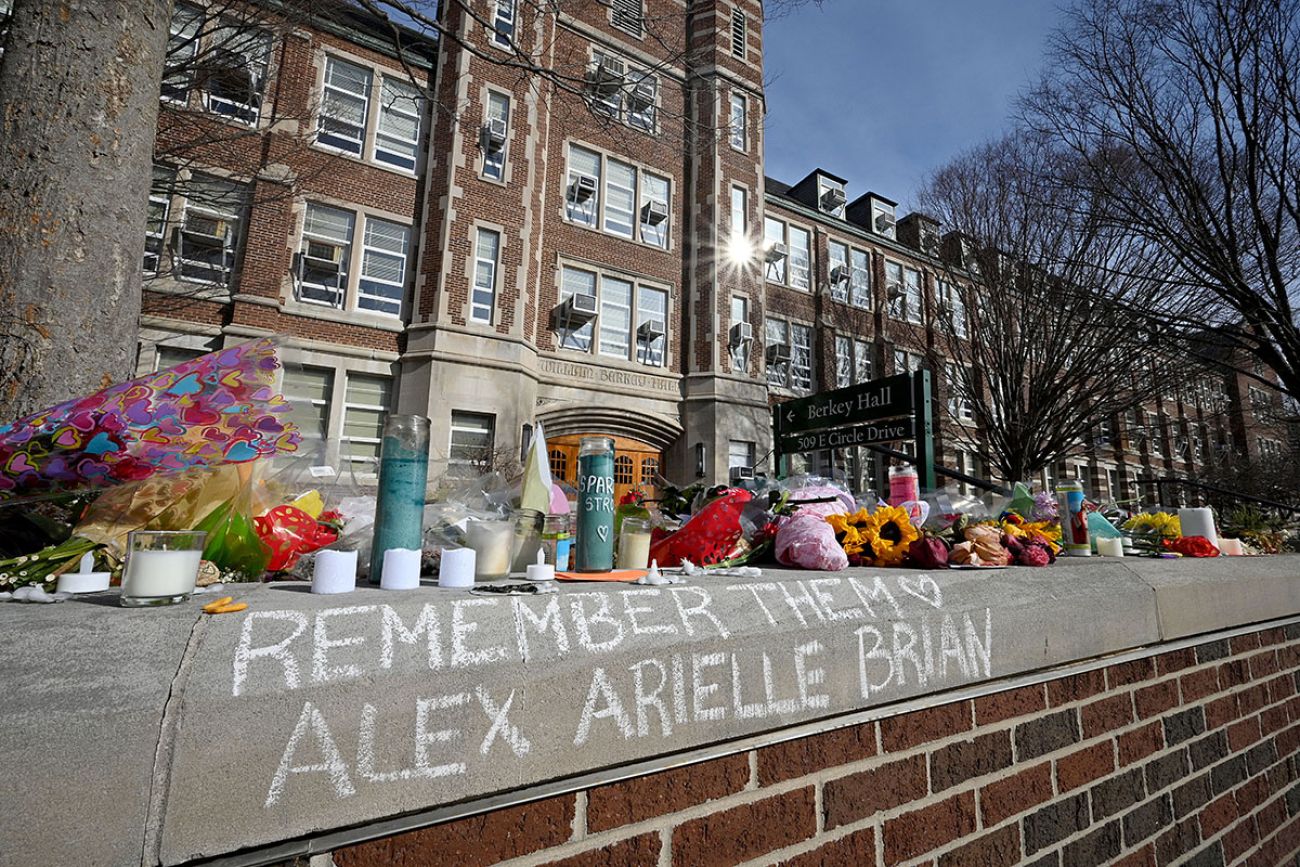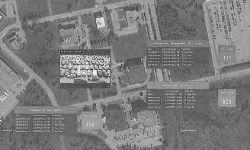What Michigan State asked, and didn’t ask, in its review of campus shooting

- MSU asked the firm reviewing its response to February’s mass shootings to focus on what went well or could be improved
- It did not specifically direct the outside firm to chronicle mistakes
- Law enforcement experts say warts-and-all reviews are essential to improving emergency responses in future shootings
A recently released report on Michigan State University’s response to a deadly campus shooter last February glossed over or did not address mistakes or shortcomings by university personnel in the chaos that evening.
It turns out, the university did not directly ask the Ohio firm handling the review to chronicle what went wrong.
Instead, MSU encouraged Security Risk Management Consultants of Ohio to focus on “what response actions MSU handled well and what actions may be improved,” according to MSU’s proposal to firms that sought to conduct the review.
Related:
- Report on deadly MSU shootings offers little insight into campus probe
- Outside report says MSU should improve security following deadly shootings
- Lawyers for 3 more students indicate they may sue MSU in shooting
The result: a 25-page summary that generally lauded the law enforcement response on Feb.13, with future-facing recommendations that said little about what investigators learned about the events that evening, when three MSU students were killed and five others critically wounded by a gunman.
The MSU review represents a significant departure from the painstaking, often critical and difficult details contained in after-action reports on other deadly U.S. school shootings, including at a high school in Parkland, Fla., an elementary school in Newtown, Conn., and at Virginia Tech University in Blacksburg, Va.
Experts on after-action reports say such reviews, when done correctly, are critical to evaluating law enforcement training and response in emergency situations and, just as important, in helping agencies across the U.S. learn lessons from past responses.
“You’ve got to know where you’ve been to improve, there’s no question. You’ve got to know where you’re weak,” Wade Carpenter, president of the International Association of Chiefs of Police, which produces best practices and other resources for police agencies, told Bridge Michigan Friday.
Carpenter, who is also police chief in Park City, Utah, acknowledged that some organizations may be hesitant to reveal all weaknesses out of concern someone else could exploit them before they are fixed.
Jason Russell, a school security consultant whose firm bid for MSU job, said a warts-and-all report would have been better for making changes. He criticized the Michigan State report as “extremely thin and cursory.”
But he too said the university may have been thinking about potential liability when it solicited review bids. The families of several injured or killed students have filed legal papers indicating they are likely to sue the university, citing alleged security lapses.
MSU officials “certainly don’t want to hand the party that’s going to sue you (a report) from a third party that found the same thing the litigation is based on,” Russell said.
A night of terror
On the evening of Feb. 13, Lansing resident Anthony McRae shot and killed Arielle Diamond Anderson, 19, of Harper Woods, Brian Fraser, 20, of Grosse Pointe Park and Alexandria Verner, 20, of Clawson. He critically injured five other students. Most of the carnage took place in a classroom in Berkey Hall. The shooter then exited the building and made his way to the MSU Union, where he killed Fraser.
Officers searched for McRae for hours before they found him a few miles from campus. As they approached, the gunman took his own life.
In the hours, days and weeks after the rampage, questions began to arise about the emergency response of campus police and the level of security preparedness on campus.
There was a 12-minute gap between the first 911 calls coming in from Berkey Hall and a campus-wide alert to students to take cover. Some law-enforcement personnel self-deployed to the scene, creating confusion as supervisors sought to set up command posts. The lack of a unified security camera system on campus made it difficult for officers to track the assailant’s movements, potentially delaying their ability to confront him.
The university posted a request for proposal, the formal document used to solicit bids from firms that conduct post-shooting reviews. Seven vendors responded. The university announced it had chosen the Ohio firm two months after the shooting.
In its request, MSU wrote: “The after-action review should include a comprehensive assessment of the crisis response itself, including what response actions MSU handled well and what actions may be improved.”
Painful reckonings
After-action reports following shootings at Marjory Stoneman Douglas High School in Florida, Sandy Hook Elementary in Connecticut, the U.S. Naval Yard in the District of Columbia and Virginia Tech University all delineate — in great detail — specific mistakes in responding to those tragedies. This was done in the Connecticut review even though the report ultimately concluded officers performed well in that case.
Following the 2018 attack in Parkland, Florida, where 17 were killed and 17 others wounded, a stinging report given to state officials repeatedly called out individuals and policies, identifying officers and school employees who failed to do their jobs.
It called the local sheriff’s active-shooter policy “inadequate,” it said the school resource officer’s response was “abysmal,” and it labeled the response by some law enforcement officers and supervisors as “failed.”
Experts say unflinching reviews are necessary not to demonize individual responders but to help police agencies learn from these incidents and better prevent future attacks.
“The value of the (after-action report) process cannot be argued,” wrote Dan Murphy, a former lieutenant with the Arlington County (Va.) police, in a 2018 article for the International Public Safety Association.
“During the process, leaders can collect teaching points and trends. Training gaps and deficiencies can be discussed and identified. Future training plans can be modified to improve future performance.”
The MSU review only briefly mentions complications on the night of the attack and applauds officers for their “appropriate” response. It then goes on to issue specific recommendations while saying little about the events that led to them. The report, for instance:
- Identified how campus classrooms could have better inside locks, but didn’t say the attack occurred where there weren’t any and that the professor in the classroom that was attacked had to hold one door shut from the inside to prevent the gunman from reentering.
- Called for more cameras and a unified system without saying there wasn’t one that night, unlike at many other campuses, and that it took nearly three hours to circulate a picture of the assailant taken by a hallway camera, potentially delaying his capture.
- Recommended a change in university policy to allow more people to initiate an emergency campus-wide lockdown, without mentioning that Michigan State Sgt. Zachary Rangel was on the scene of the shooting at 8:20 and radioed in a call for a campus lockdown. An alert was not issued for another 10 minutes because no one with authority was around to log into the emergency alert system at the time.
On Friday, MSU spokesperson Emily Gerkin Guerrant defended the university’s request for proposal and the completed report. She said she isn’t sure the university would need to specifically request a timeline to be included in the report but noted that timelines were shared through public records requests and questions from reporters.
MSU police released a timeline a month after the shooting.
“I don't know if we said it that way, like, ‘tell us what went wrong,’ Guerrant said. “But I do believe what was communicated to all the firms that bid, is we wanted impartial review of how it went, good and bad.”
Seven firms sought the MSU contract for the after-action report.
Bids ranged from nearly $48,000 from a Colorado firm to more than $1.4 million from Russell’s Michigan-based company, Secure Education Consultants, according to documents Bridge obtained through a public records request to the university.
Some firms had extensive experience with after-action reports following mass shootings, others did not.
Michigan State chose SRMC, which prior to getting the contract did not identify any experience with a mass-shooting incident. It was paid $193,840, the second lowest bid, and produced the 25-page document.
Following the 2007 mass shooting at Virginia Tech, which killed 32 students and staff and injured another 17, an appointed commission produced a report of 260 pages. The Parkland report was 458 pages, and the Connecticut State Police report on the Sandy Hook shooting was 74 pages.
The MSU report did make references to potential interference by university trustees in the immediate aftermath of the shootings. The report said some members “wanted to help” during the crisis but noted some “acted beyond the customary role and expectations of a governance board during an emergency.”
The report did not elaborate on that claim. Board Chair Rema Vassar said Friday that four trustees, including her, went to the university to help and to a local hospital to console victims.
Trustee Renee Knake Jefferson said during a board meeting Friday that the Ohio firm briefed the board about the review on Sept. 29, weeks before the report became public.
Guerrant, the university spokesperson, said the the firm presented to board members, Vice President and Chief Safety Officer Marlon Lynch and Interim President Teresa Woodruff in a virtual meeting.
Trustee Dennis Denno said board members had “serious concerns” with the report and trustees wanted to speak to the firm but to his knowledge, the firm did not speak to board members outside of that briefing.
“I just think if the goal of the report was to find out what we did well and what we didn’t do well, it all needs to be on the table,” Denno told Bridge.
Frank Straub, who has conducted several after action reviews, including a 99-page review about the Parkland Shooting for the National Policing Institute, told Bridge that sometimes firms put out a public facing report and also a private internal report.
For example, a firm might identify a security issue that if made public, could compromise security. Or, he said, an internal report might include specific details about victims or those who have been traumatized by the event.
“It is quite possible, again, I don't know that this was the public facing report and that other information could have been given to the staff and persons at MSU in private or in a confidential report,” he said.
MSU officials told Bridge they know of no other reports submitted to the university other than the one that was made public.
Straub, co-director of a Michigan State University pilot program designed to identify and support students at-risk of committing violence, said he believes the MSU has value, so far as it goes.
“I would say, this report is a good report. But it's very much a bullet point report,” Straub said. “We always went to great strides to really break down the chronology, if it was minute-by-minute or hour-by-hour, whatever was the appropriate way of doing it. But every report is kind of different.”
Michigan Education Watch
Michigan Education Watch is made possible by generous financial support from:
Subscribe to Michigan Health Watch
See what new members are saying about why they donated to Bridge Michigan:
- “In order for this information to be accurate and unbiased it must be underwritten by its readers, not by special interests.” - Larry S.
- “Not many other media sources report on the topics Bridge does.” - Susan B.
- “Your journalism is outstanding and rare these days.” - Mark S.
If you want to ensure the future of nonpartisan, nonprofit Michigan journalism, please become a member today. You, too, will be asked why you donated and maybe we'll feature your quote next time!





